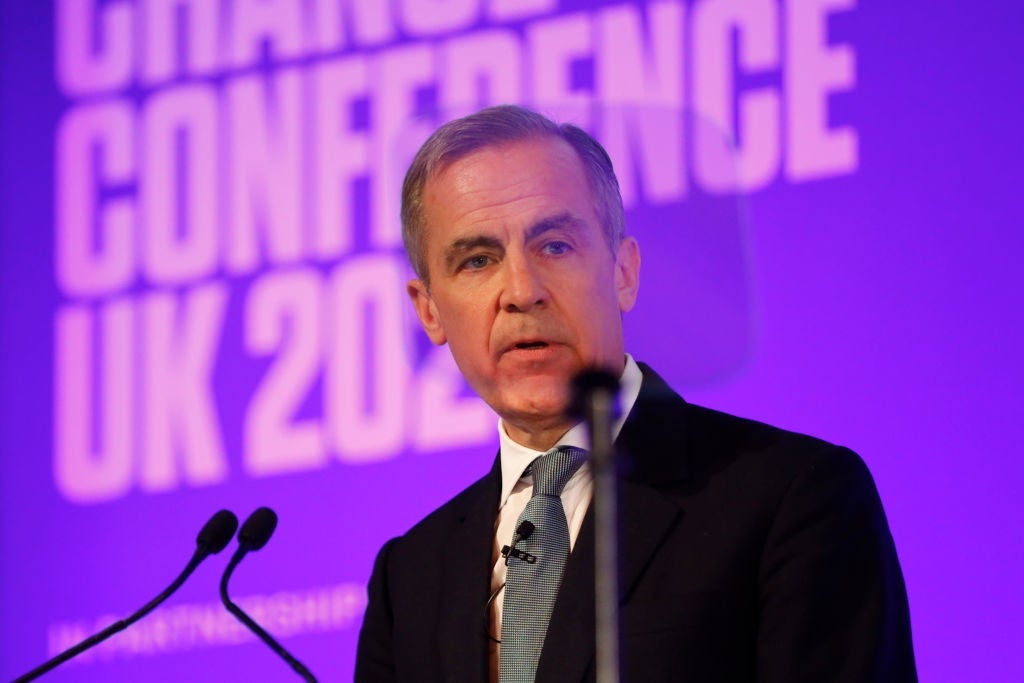
Agriculture employs 400,000 people in the UK, where 71% of land is dedicated to farming. Leasing and asset finance have long played key roles in funding this vital industry. Saad Ahmed spoke to lessors to find out how the market has changed, the benefits for lessees, and what could be next.
Although agriculture only accounted for 0.6% of the UK’s GDP, it continues to have an outsize effect on the economy and labour market.
Food and drink manufacturing contributed £26.9bn to the economy, and £198bn was spent on food, drink, and catering by UK consumers annually as of 2014, according to the Department of the Environment, Farming and Rural Affairs (Defra). Over 3.8m British workers owe their livelihoods to agriculture and its resultant industries.
Food prices have fallen by 50% over the past 20 years, according to the environment-focused information site Corporate Watch, and this shows no signs of abating.
However, in an industry which has experienced declining revenues, investment has actually increased; leasing and asset finance products have helped enable this.
With declining revenues, agricultural businesses looking to expand – or even to simply maintain – their operations have been driven to look increasingly beyond self-funding through cash flow.
How well do you really know your competitors?
Access the most comprehensive Company Profiles on the market, powered by GlobalData. Save hours of research. Gain competitive edge.

Thank you!
Your download email will arrive shortly
Not ready to buy yet? Download a free sample
We are confident about the unique quality of our Company Profiles. However, we want you to make the most beneficial decision for your business, so we offer a free sample that you can download by submitting the below form
By GlobalDataAccording to BNP Paribas Leasing Solutions UK, in the 12 months to the end of June 2016, investment by agricultural businesses rose to £7.1bn from £6.8bn in the same period last year.
Leasing and asset finance offer an alternative source of funding, and play an increasing role in financing the agricultural industry.
Jim Leamon, head of agriculture at Shawbrook Bank, tells Leasing Life that interest in leasing and asset finance has increased due to declining revenues.
“The strong businesses that are traditionally funded out of cash flow or via the bank look to use asset finance more to help manage the cash flow of the business,” Leamon says.
Leasing Life spoke to BNP Paribas, Shawbrook, and Lombard to examine the role leasing and asset finance play in funding agricultural businesses in the UK, and if it has potential to increase.
Agricultural assets
Agricultural businesses are not uniform, so the assets sought by the businesses can vary greatly.
Dario Ghislandi, head of equipment and logistics solutions international business line at BNP Paribas Leasing Solutions, tells Leasing Life that the assets for which it provided funding covered a range of agricultural functions.
“In terms of volumes, tractors and combines are our main assets. In terms of market share, we have the same results for forage harvesters and ballers,” Ghislandi explains.
“However,” he adds, “our interest is towards all agriculture equipment, like telescopic handlers, grape harvesters, and of course the attachments to tractors.”
BNP Paribas Leasing Solutions operates in 21 countries, and in the UK agriculture is its main area of operation.
“Agriculture is our main market in the UK,” Ghislandi stresses, adding that agricultural businesses are increasingly interested in automation in farming, and seeking new technology.
Lombard agrees that the past few years had seen a shift in popularity of the different assets for which funding was sought. Leamon states that this was linked to the performances of the different sectors, and uses dairy to illustrate this.
“Two years ago, the dairy sector was enjoying better prices for milk than had been seen in a long time. So that led to farms looking to expand their dairy operations. But, in the past 12-15 months, there has been a total turn in that respect,” Leamon says.
“Many businesses are now actually producing at a daily loss. The cost of production for dairy is about £0.24-0.25 a litre (but does vary business to business) and the majority are getting a milk price of £0.22-0.23, and, in some cases, sub-£0.20. That presents a challenge in itself.”
It is clear that the exact composition and popularity for each type of asset that lessors funded is driven by the evolving needs and economic realities of businesses in the agricultural industry.
In the more general case, a move towards greater automation and the prioritising of speed and efficiency over ownership mean a faster uptake of new technology.
In a financial sense, as shown by the UK dairy industry, sectors performing well are more likely to seek asset finance in order to capitalise while the going is good, and then retreat once the tide turns.
Being green
The renewable and environmentally friendly energy sector is heavily entwined within agriculture, with all the lessors reporting that they have provided asset finance for such products.
Anaerobic digesters, which use bacteria to break down biological material into biogas, are one technology that has seen interest among agricultural lessees.
Hiten Sonpal, head of specialist sectors at Lombard and who formerly worked on green energy and renewables, stresses the importance of renewables in agricultural leasing.
“In my previous role with renewables I looked after some of the largest agricultural connections in the East of England. So I do have a background and some experience in that market,” Sonpal explains.
“Specifically, I concentrated on green energy and renewables from 2010-11, up until earlier this year. Of my book on renewables, about 40% of the business written per annum is via the agricultural sector.”
Other lessors reiterate the link between renewables and agriculture, establishing it as a key category of assets sought within the industry. In the case of anaerobic digesters, investing in this technology helps provide an additional source of income to mitigate against the impact of falling crop prices.
In 2015, Lombard financed an anaerobic digestion plant for a potato farm in Colchester. As featured in The Times in November 2015, Lombard financed the project after the farmer David Hunter sought to lessen the impact of plummeting potato prices – which had fallen 70% from the previous year – on the farm’s finances.
“Last year potatoes cost us more to grow than sell. Add to that, if you get really bad weather at this time of year you’re unlikely to get any crop in at all,” Hunter said.
Hunter and his business partners Will and Charlie Lochore formed a new venture, Fullcircle Energy, to facilitate the venture.
Using crop yields from maize, potatoes, and onions, the group created methane-heavy biogas which is sent into the National Grid and is used to power 200 homes.
Lombard established a hire-purchase agreement, after Fullcircle decided to refinance after a year. At the end of the seven-year term, Fullcircle will gain ownership of the plant.
Based on projections at the time, Lombard asserted that payments from Fullcircle would match earnings from the plant.
UK government policy has been instrumental in encouraging exploration of renewable energy, and particularly anaerobic digesters, among agricultural businesses.
The Feed-in Tariff (FIT) is a government scheme that provides payment based on electricity generation by environmentally-friendly means.
Leamon tells Leasing Life how seeking asset finance for anaerobic digesters is beneficial for agricultural businesses.
“It complements the business. The key thing is to assess the viability is how much of the power you will consume yourself,” Leamon says.
“FITs from the government give a generation return per kilowatt produced. If you also use that power yourself then you are in a win-win scenario, because you are saving money on energy.”
Shifts in government policy have influenced the assets for which agricultural businesses seek funding from lessors. In 2015, the UK government amended its implementation of the BPS, removing the ability for land with solar panels to be covered under the scheme. In addition to this, the FIT was cut by 65% last year.
These changes in legislation doubly impacted upon solar generation among agricultural businesses, reducing its viability as an income source.
“Similarly on the Renewable Energy front due to dramatic changes in FIT payments, investment in solar PV is on the decline with the capital cost versus the revenue or net benefit making it a less viable investment in the short term and thus possible not the best use of capital in the short term,” Leamon added.
However, another form of renewable energy generation may have actually benefited from these policy changes. Leamon says biomass boilers have remained an attractive option as a viable and valuable source of heat for agricultural businesses – particularly the poultry sector.
“There is the benefit of generating heat for the units, as they require a high energy demand to keep the environmental control system at the right temperature,” Leamon said.
“By using biomass, that is going to be a better benefit to the business with the current level of RHI government payments available.”
The non-domestic RHI provides quarterly payments over 20 years, based on the amount of heat generated to farms which house the project, to encourage renewable energy generation.
Through government schemes such as FIT and RHI, lessors have seen the composition of the agricultural market for leasing and asset finance change.
Being seen
As investment in agriculture has risen despite falling prices, the opportunity for lessors has increased.
To capitalise on this, lessors need to spread awareness of leasing and asset finance as an alternative source of funding, and, more specifically, of their own offering in this field. Relying on name recognition and its resulting perceived strength can only take a lessor so far.
Ghislandi explains that BNP Paribas has been providing funding for agricultural equipment for over 70 years, and that it has established networks with manufacturers and others to promote its asset finance product offering for agriculture.
“We offer our knowledge and expertise to the main manufacturers and to their sales networks, as they are the best promoters of the financial products. They are close to the end users and they are very responsive to us to confirm what is or is not appreciated by the market,” he says.
Shawbrook takes a similar approach, working with brokers and dealers of the actual equipment that the asset finance products would fund.
“Brokers are a key part of our business – the long-established brokers and broker groups who have existing relationships,” Leamon says.
“[We] also [speak with] the equipment dealers. We maximise on that, and provide the right service to the brokers and the customers alike.”
Other lessors seem to take a more active approach. The Lombard specialist agriculture team was created in 2009, and continues to make use of the banking relationships within the Royal Bank of Scotland Group.
However, in addition to this, Sonpal explains that Lombard attends industry shows, and produces promotional literature of case studies.
“[We use] case studies, and social media. We also attend a lot of shows, like the Energy Now Expo, which is a dedicated show for renewables, and agricultural customers specifically,” he says.
Though the lessors agree that there is continued opportunity to promote products to increasing agricultural businesses, some argue that asset finance was not suitable in all situations.
“Business acquisitions, land purchases, buildings, and working capital facilities would very much be more of a traditional banking facility,” Sonpal says.
In Shawbrook’s view, asset finance would not be suited to longer-term projects which may take a while to deliver a payback.
“Asset finance lends itself to a maximum term of six or seven years. If a bank is happy to support over the long term, and with the right security help match income with cash flow, banks can be a better provider on a long term basis, but asset finance certainly provides an attractive proposition over the short to medium term” Leamon said.
The future
The performance of the agricultural sector in the UK has been in decline. The latest Defra projections anticipated a 29% fall in total income from farming, due largely to declining global food prices.
Asset finance products provided funds when agricultural businesses could not finance production or expansion from their own pockets. However, a major and more substantial source of funding is at risk of being withdrawn completely.
The spectre of Brexit looms heavy over UK agriculture, and where sources of funding are concerned, subsidies from the EU dominate.
Currently, it is estimated that 55% of all income from farming comes directly from the EU through the Basic Payments System, part of the union’s Common Agricultural Policy. UK farms were allocated €5.2bn in subsidies for the period 2014-2020. At the time of writing, the UK government has pledged to keep this in place until 2020, with no promise of what may come after.
With uncertainty regarding the nature of UK’s relationship – if any – with the EU, and specifically the single market, the future for an industry which derives more than half of its subsidy from the EU, and exports £9.37bn worth of food and drink to EU countries, seems far from secure.
From the perspective of an institution that provides leasing and asset finance, this could present increased opportunities, as lessors could rise to fill the potential funding gap.
“We do not firmly know what the positon will be post-Brexit in terms of demand. But, for sure, asset finance will always play a key and likely increasing role in the industry as it enables agricultural businesses to invest in the tools to help grow their business and work in an efficient way,” Leamon said.
Kieran McSweeney, also of Shawbrook, agrees, arguing that regardless of the effect of Brexit on agricultural funding, asset finance products would remain an attractive option.
“Any tool which enables a business to have options around managing cash flow and capital expenditure in an efficient manner is going to be useful at any point in time. Probably even more so if times are uncertain,” McSweeney explains.
Beyond funding, the lessors tell Leasing Life that they expect the nature of the assets for which agricultural businesses seek funding to change.
Despite the economic difficulties, a desire for innovation seems to be gaining ground in agriculture.
A survey by Defra found that 24% of arable businesses had introduced some form of innovation over the past year.
Ghislandi says BNP Paribas is looking with interest at technological developments in the sector, and how they may influence the assets for which it provides future finance.
“We are also following, with particular interest, all of the new assets that foster the transformation to ‘digital farming’, from drones to self-driven machines, for example,” Ghislandi says.
These developments represent a shift, as according to Ghislandi, the agricultural sector tends to be very conservative in its outlook.
A focus on asset ownership is also a key illustration of the industry’s nature. However, recently the usership model has also penetrated into this traditional industry, and is changing the way agricultural businesses operate.
“Ownership is no more a must, and the request is to have more and more flexibility in order to grant a faster renewal in technology,” he says.
It is suggested that the adoption of new technology is essential in order for UK agriculture to continue in future. With the average UK farmer aged 59 years, it is hoped that a technological revolution in agriculture will persuade the next generation to continue.
All the lessors agree that it is too soon to correctly assess the full impact of Brexit.
However, the consensus seems to be that the future of agricultural asset finance in the UK would be shaped by two things: expected increased interest in leasing and asset finance, and a shift to more technological advanced assets as the industry moves into the future.







